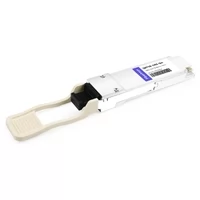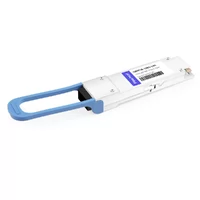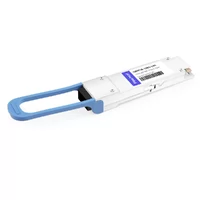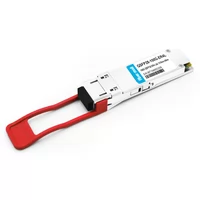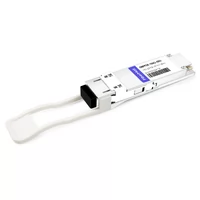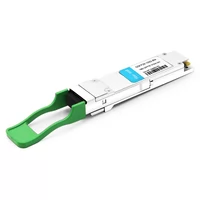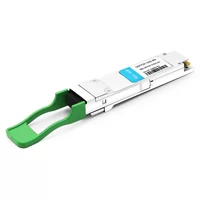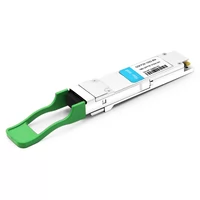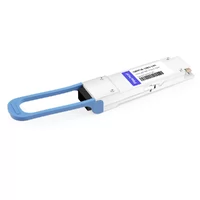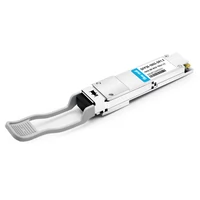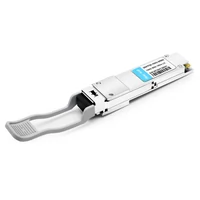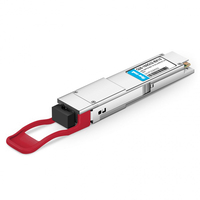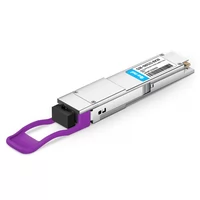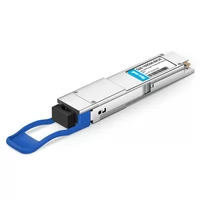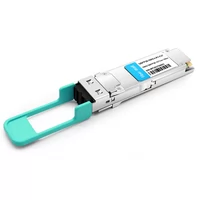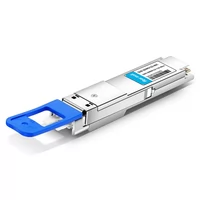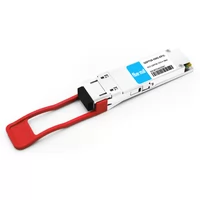This blog examines the NVidia Mellanox SN2100 switch, which is reputed worldwide for its high network features. The switch is designed with sixteen QSFP28 ports that enable 100G data transmission, which is suitable for modern data centers and enterprises. The SN2100 can offer low latency, integrated telemetry, and various routing options, making managing and improving the network’s effectiveness easier. Throughout this article, we shall look at these technical specifications in detail to see their significance in actual performance relevant to IT professionals and network architects seeking information on how best to plan and set up or improve their ICT infrastructures.
Table of Contents
ToggleMellanox Product Information: Understanding the SN2100 16-Port 100G Switch

The NVIDIA Mellanox SN2100 is built with solid performance, scalability, and efficiency in mind to meet the increased demands of today’s data center. Its QSFP28 ports ensure ultra-fast data transfers and higher data throughput; this 16-port 100G switch is ideal for nesters looking to boost their network speed. With its low weight and small 1U size, it can easily fit into tightly spaced installations, be it cabinets or racks, while it’s low latency and advanced telemetry allow users to manage their networks in real-time. Moreover, with the power requirements of the SN2100 being minimal, the running costs of this device are no more than the requirements of a sustainable IT infrastructure. Its network architecture does not limit the infrastructural capabilities of the network, rather it enhances the enterprise by architectural means.
What is the Mellanox SN2100?
Mellanox SN2100 is a compact 1U form factor 16-port 100G Ethernet switch explicitly designed for enterprise networks and data centers. It offers 100G QSFP28 interfaces for high-speed transmission of data, which strengthens the network’s overall efficiency. The switch features low latency support and onboard advanced telemetry for configuration and management in real-time. It is, therefore, perfect for locations and settings where robust and green networking infrastructure is a standard requirement. Its energy efficiency also helps cut operational costs, meeting the tactical goals of IT managers looking to streamline network designs.
Key Features of the Mellanox SN2100 16-Port 100G
- High Throughput and Low Latency: The SN2100 enables high-speed communication across networks with high data throughput and low latency.
- Compact Design: The 1U design easily fits in tight spaces in data centers, optimizing the physical space while maintaining the required performance.
- Energy Efficiency: The SN2100 aims to reduce power demand, which helps to save costs and protect the environment.
- Advanced Telemetry: This allows for a complete set of tools for network management and monitoring in real time, which facilitates quick diagnosis and correction of network malfunctions.
- Scalability and Flexibility: The QSFP28 ports provide interfaces that can be adjusted according to the network’s changing needs.
- Robust Software and Hardware: It is installed with strong and flexible software and hardware, which is essential for the dynamic nature of modern enterprises.
How the Mellanox Spectrum Powers this 100Gbe Open Ethernet Switch
The unique Mellanox Spectrum ASIC is used in the network to create the TAC’s 100Gbe Open Ethernet Switch with some of the unmatched capabilities in packet processing with the lowest delays and maximum forwarding rate at all ports. The state-of-the-art silicon design assures consistent performance while circling the traffic without causing packet loss, which is imperative for applications that rely on significant data traffic and maximum flexibility in the network configuration. Furthermore, the ASIC also implements enhanced network virtualization and considerable packet buffer control, which helps deal with complicated tasks. This sturdy configuration can be employed smoothly in active organizational settings, resulting in improved architecture, scaling ability, and network reliability. The Spectrum also stands out, as he managed to make significant efforts in the area of telemetry to create better monitoring of the network analytics and optimization possible.
NVIDIA Mellanox Connectivity: Exploring QSFP28 Ports and More

How Do QSFP28 Ports Enhance Connectivity?
QSFP28 ports improve interconnections because they allow the connection of many high-speed network solutions that are essential in large data centers. Their data rate equals or exceeds 100Gbps, enabling adequate bandwidth for complex operations while being energy-friendly. With QSFP28 being a relatively small form factor, there is an enhancement of the port density and a lesser amount of space that networking equipment occupies, and infrastructure is improved. Further, various types of optical modules and cables can be used with the QSFP28 ports, which give deployment options on 25G, 50G, and 100G Ethernet suitable for the needs of the network. This level of flexibility and efficiency promotes smooth modernization and incorporation of new features into existing networks and designs while assuring high reliability and protection against obsolescence.
Exploring the Non-Blocking Architecture of the SN2100 Switch
The SN2100 switch uses a non-block structure built to handle incoming and outgoing packets without any blocking, even while fully loaded. This structure guarantees no congestion by allowing every packet that arrives at the switch to be sent out at line rate speed. Such an approach establishes that there is minimal delay in operations. Using a wholly shared buffer in the architecture deploys on-demand memory resources for traffic pattern diversity, enhancing the switch’s overall throughput. Avoiding packet loss by implementing flow control when a network is flooded is also paramount in delivering data with the SN2100 since the applications are data-dependent. Given the nature of this interconnect, the SN2100 can stay within managed limits due to improved design while providing increased expectable performance so that the system can operate in today’s high-density data environment while at the same time retaining per port configuration options.
Compatibility with Other NVIDIA Mellanox Products
The SN2100 switch has been developed to work efficiently together with many products in the NVIDIA Mellanox ecosystem; this will help in making network infrastructure deployment easier, which includes but does not outweigh the limit of ConnectX network interface cards (NIC) LinkX Cables and transceivers which helps in the end to end connectivity in the data centers. This integration is essential for interoperability, reducing operational costs, and optimizing network administration. In addition, the SN2100, with the support of NVIDIA’s smart interconnect solutions, can increase performance by removing a load of computing tasks from all CPUs. This, in a way, simplifies the integration of hardware components, as all clients of NVIDIA Mellanox can employ the full range of networking technologies provided by the company to meet their growth and operational needs in a flexible environment.
Shop with Confidence: Choosing the Right Mellanox Switch System

Why Choose the 100Gbe 1U Open Ethernet Switch?
The 100Gbe 1U Open Ethernet Switch aims to satisfy the requirements of very high-speed networking environments. Its high-density 1U size allows utilization of server rack space in an efficient manner while still allowing for high 100GbE throughput. Thus, it is suitable for use in data centers requiring high bandwidth and low latency connectivity. It also has an open Ethernet architecture that is customizable and can be integrated seamlessly into existing network configurations and SDN (Software Defined Network) implementations. Of particular interest is its capability to perform advanced networking functions and support other advanced protocols, which translates to scale and preparedness for the future, thus assuring the organizations of an up-to-date and flexible network infrastructure.
Assessing the Form Factor and Port Density
Regarding networking switches, it is essential to consider not only existing requirements but also opportunities for expansion in the future. For instance, there are half-width 16 port non-blocking 100gbe open configurations. For example, the 1U form factor of the Mellanox 100Gbe switch facilitates the optimal utilization of server rack space while operating at high throughput. The port density of the device, which is the number of ports available, limits the switch’s scalability/future expansion. A more significant port density allows for more interconnected devices, facilitating better network administration and lowering congestion chances. Mellanox 100Gbe and other open Ethernet switches are also suitable for these applications since they can utilize many modern networking techniques, there is a need for adapting to a wide variety of network topologies and protocols, so it is possible to protect investments in future.
What to Consider When Buying a Mellanox Switch?
A Mellanox switch is an integral asset to any organization or company. While purchasing such a switch, salient steps need to be considered. First, moving on to the performance specifications about throughput latency and port speed on the backbone architecture, and in case they do not meet specific workload requirements, some adjustments must be made to build a proper network architecture. Another critical consideration is potential integration with the existing network, ensuring minimum disruption. The growth potential should be given great importance by assessing development strategies and the necessity of scaling the port density. Furthermore, it adds balanced support for various protocols and features such as VXLAN, RDMA, and RoCE, making a network more efficient and functional since the switches in question are optimized for varying load requirements. Finally, check out the general cost of the proposal, including the initial fees and the overall cost incurred, which includes operation, maintenance, backup support, and optimal energy usage.
Mellanox MSB7790-ES2F: A Closer Look

Understanding the MSB7790-ES2F Model
Today, I aim to familiarize you with one of the most successful models, the Mellanox MSB7790-ES2F. It targets a defined market and data networking on a faster, high-performance scale. Its 36 ports of 100 GbE can sustain a very high throughput with very low latency, emphasizing its efficiency in a data center layout. It has standard support for RDMA and VXLAN, which is essential for resource allocation and network virtualization. Besides that, it can also support a variety of configurations, making it suitable for many different kinds of infrastructure. When deciding on this particular switch, it is essential to determine if the device’s performance discriminator meets the expected conditions. The MSB7790-ES2F is a good choice for businesses demanding high performance while providing many network options, especially since it is capable of 100 GB in capabilities.
Comparing the MSB7790-ES2F to Other Mellanox Models
The Mellanox MSB7790-ES2F requires comparison with other devices on a few key parameters. Firstly, the MSB7790-ES2F has many ports, as it has 36 ports of 100 GbE, which is appropriate for use when ample connectivity and bandwidth are needed. Other Mellanox models provide channel options, some even supporting multi-speed, which are helpful for different organizations depending on their budget and requirements.
Secondly, the MSB7790-ES2F supports RDMA and VXLAN and has superior capabilities compared to other models. Different models have unique characteristics specific to their deployment circumstances that comprehensively allow the Company to strengthen its Layer 2/3 features further or even add network management support.
Last but not least, these models should be compared in terms of cost, as there can be those that are cheaper than MSB7790-ES2F but offer low throughput or minimal features. In conclusion, in determining whether to use MSB7790-ES2F or the other models, the company will have to assess their demand for performance, scalability, and various expenses.
NVIDIA Mellanox: Power Supply and Latency Considerations

How Does the Dual Power Supply Improve Reliability?
Having a dual power supply system improves reliability by offering a backup and as allowing the system to function even when one power supply unit is defective. The absence of a unit or subsystem of a fully redundant system is a single point of failure, which is remarkably important for avoiding system crashes in data centers. Operating two power supplies also allows for load division, decreasing the load and enhancing the unit’s service life. Furthermore, even during servicing, one of the power backup units can be replaced without causing any network downtime, improving the runtime and operations’ consistency. This backup equally guarantees that power failures are averted as business operations can still progress.
Latent Power: Performance Metrics that Matter
When analyzing performance metrics concerning latency, a few aspects are critical in today’s networking environments. Latency is the time it takes for information to get from the source to the final consumer; this impacts how well applications perform and how the end user interacts with them. Thus, RTT, jitter, and packet loss are essential metrics. A lower round-trip time is better since the network is more responsive, which is particularly important for real-time applications such as VoIP and online gaming. Jitter – the variation in the time packets are sent and received must be as low as possible to guarantee a consistent performance. Also, packet loss must be curbed since lost packets may require retransmissions, affecting both latency and throughput. When taken together, these parameters provide a better understanding of networks and their performance and assist in detecting inefficiencies and areas of improvement within the data infrastructure.
Optimizing Data Center Efficiency with Mellanox Switches
Mellanox switches are created to improve the use of the data center within the advanced network structure. These switches can enable high transfer rates of data, transfer rates of very short periods of time, and transfer allowances, which are essential in enhancing data-focused activities, more so in 16 port concurrent running setups. They utilize intelligent networking capabilities like adaptive routing, congestion control, and quality of service (QoS) techniques to enable effective data transfer while ensuring efficient use of resources. Furthermore, Mellanox switches incorporate technologies that conserve energy and lower operating expenses, thus increasing their contribution towards a sustainable environment and providing a side-by-side 100gbe alternative switching solution. If such Mellanox switches are deployed in data centers, they will boost a data center’s deployment growth, robustness and performance measures, hence, better services and support for contemporary workloads will be provided.
Reference Sources
Frequently Asked Questions (FAQs)
Q: What are the characteristics associated with the NVIDIA Mellanox SN2100?
A: The SN2100 has 16 QSFP28 ports, which are enough to make it a non-contiguous Ethernet device. It falls under the non-blocking category and has a thin design. The form factor is 1 RU with high-performance romancing. The switch supports various networking requirements as it can work on Cumulus Linux or the Mellanox Operating system.
Q: How do you configure the NVIDIA Mellanox SN2100?
A: 100G Ethernet ports are sometimes dense and scattered. However, that is not the case with the SN2100, which is equipped with 16 ports, allowing seamless connection with all the servers, making it ideal for use in cooling and cabling in data centers.
Q: How can you turn the NVIDIA Mellanox SN2100 into an InfiniBand switch?
A: First and foremost, the SN21000 is an ethercat 6-infused device that requires EDR to operate. However, for it to be relevant, it has to be configured appropriately. Where you intend to make the switch is appropriate, as the redundant network interface controller is the most reliable feature.
Q: Which networks support and work with the NVIDIA Mellanox SN2100?
A: Areas that offer wider functionalities include Cumulus and Mellanox. This enables the manufacturers to employ networking requirements and integrate seamlessly into the provided whiteware.
Q: What is the throughput capacity for the NVIDIA Mellanox SN2100?
A: The SN2100 has been demonstrated to provide non-blocking 100 gigabits Ethernet (GbE) performance on all 16 ports. Due to each 100Gbps port, the switch has a throughput capacity of 3.2Tbps. It is, therefore, capable of handling rigorous data center usage, especially those involving 16 ports being used simultaneously.
Q: Does the NVIDIA Mellanox SN2100 have advanced routing capabilities?
A: The SN2100 has capabilities such as IPv6 routing and other advanced routing features. The switch’s CPU (x86 dual-core) and the Mellanox Spectrum ASIC allow it to perform complex routing.
Q: Provide information on the power supply options of the NVIDIA Mellanox SN2100.
A: The SN2100 includes two power supplies for higher redundancy and a high availability system. The airflow direction can suit a user’s data center cooling needs.
Q: Is a rail kit available for mounting the NVIDIA Mellanox SN2100?
A: A rail kit for the SN2100 can be found. The switch has a small 1RU form factor and only occupies half of a rack width. This allows it to be mounted back to back with another SN2100 on the same rack, allowing for a space-efficient 100GbE switching solution.
Q: Can the NVIDIA Mellanox SN2100 be used as a router?
A: The SN2100 is capable of functioning as a major router. Due to its powerful CPU, advanced ASIC, and routing protocols, it can perform routing functions in addition to its switching roles.
Q: Why do you think the NVIDIA Mellanox SN2100 fits in the data center environments?
A: There are many reasons for such compatibility. Some of them are that the SN2100 has a plating of 3 or 4 feature-enriched 100GbE ports, a non-blocking fit, is pleasantly tiny, and, most importantly, can route and use IPv6. It is very capable of providing simple full rack connectivity in an advanced appeal and goes well with the popular operating systems essential for networking, making it suitable for high-performance data centers.
Related Products:
-
 QSFP28-100G-SR4 100G QSFP28 SR4 850nm 100m MTP/MPO MMF DDM Transceiver Module
$40.00
QSFP28-100G-SR4 100G QSFP28 SR4 850nm 100m MTP/MPO MMF DDM Transceiver Module
$40.00
-
 QSFP28-100G-LR4 100G QSFP28 LR4 1310nm (LAN WDM) 10km LC SMF DDM Transceiver Module
$285.00
QSFP28-100G-LR4 100G QSFP28 LR4 1310nm (LAN WDM) 10km LC SMF DDM Transceiver Module
$285.00
-
 Cisco QSFP-100G-LR4-S Compatible 100G QSFP28 LR4 1310nm (LAN WDM) 10km LC SMF DDM Transceiver Module
$285.00
Cisco QSFP-100G-LR4-S Compatible 100G QSFP28 LR4 1310nm (LAN WDM) 10km LC SMF DDM Transceiver Module
$285.00
-
 QSFP28-100G-PSM4 100G QSFP28 PSM4 1310nm 500m MTP/MPO SMF DDM Transceiver Module
$180.00
QSFP28-100G-PSM4 100G QSFP28 PSM4 1310nm 500m MTP/MPO SMF DDM Transceiver Module
$180.00
-
 QSFP28-100G-ER4L 100G QSFP28 ER4 Lite 1310nm (LAN WDM) 40km with FEC,30km without FEC LC SMF DDM Transceiver Module
$800.00
QSFP28-100G-ER4L 100G QSFP28 ER4 Lite 1310nm (LAN WDM) 40km with FEC,30km without FEC LC SMF DDM Transceiver Module
$800.00
-
 QSFP28-100G-ZR4 100G QSFP28 ZR4 1296-1309nm LWDM 80km LC SMF DDM Transceiver Module
$1500.00
QSFP28-100G-ZR4 100G QSFP28 ZR4 1296-1309nm LWDM 80km LC SMF DDM Transceiver Module
$1500.00
-
 QSFP28-100G-IR4 100G QSFP28 IR4 1310nm (CWDM4) 2km LC SMF DDM Transceiver Module
$110.00
QSFP28-100G-IR4 100G QSFP28 IR4 1310nm (CWDM4) 2km LC SMF DDM Transceiver Module
$110.00
-
 Cisco QSFP-100G-CWDM4-S Compatible 100G QSFP28 CWDM4 1310nm 2km LC SMF DDM Transceiver Module
$110.00
Cisco QSFP-100G-CWDM4-S Compatible 100G QSFP28 CWDM4 1310nm 2km LC SMF DDM Transceiver Module
$110.00
-
 Huawei QSFP-100G-CWDM4 Compatible 100G QSFP28 CWDM4 1310nm 2km LC SMF DDM Transceiver Module
$110.00
Huawei QSFP-100G-CWDM4 Compatible 100G QSFP28 CWDM4 1310nm 2km LC SMF DDM Transceiver Module
$110.00
-
 Huawei QSFP-100G-LR4 Compatible 100G QSFP28 LR4 1310nm (LAN WDM) 10km LC SMF DDM Transceiver Module
$285.00
Huawei QSFP-100G-LR4 Compatible 100G QSFP28 LR4 1310nm (LAN WDM) 10km LC SMF DDM Transceiver Module
$285.00
-
 QSFP28-100G-SR1.2 Single Rate 100G QSFP28 BIDI 850nm & 900nm 100m LC MMF DDM Optical Transceiver
$280.00
QSFP28-100G-SR1.2 Single Rate 100G QSFP28 BIDI 850nm & 900nm 100m LC MMF DDM Optical Transceiver
$280.00
-
 Cisco QSFP-40/100-SRBD Compatible Dual Rate 40G/100G QSFP28 BIDI 850nm & 900nm 100m LC MMF DDM Optical Transceiver
$449.00
Cisco QSFP-40/100-SRBD Compatible Dual Rate 40G/100G QSFP28 BIDI 850nm & 900nm 100m LC MMF DDM Optical Transceiver
$449.00
-
 Q28-100G32-BX10 100G QSFP28 BIDI TX1331nm/RX1271nm PAM4 Single Lambda LC SMF 10km DDM Optical Transceiver Module
$500.00
Q28-100G32-BX10 100G QSFP28 BIDI TX1331nm/RX1271nm PAM4 Single Lambda LC SMF 10km DDM Optical Transceiver Module
$500.00
-
 Q28-100G23-BX20 100G QSFP28 BIDI TX1291nm/RX1311nm Single Lambda LC SMF 20km PAM4 DDM Optical Transceiver Module
$600.00
Q28-100G23-BX20 100G QSFP28 BIDI TX1291nm/RX1311nm Single Lambda LC SMF 20km PAM4 DDM Optical Transceiver Module
$600.00
-
 Q28-100G94-BX30 100G QSFP28 BIDI TX1309nm/RX1304nm Single Lambda LC SMF 30km PAM4 DDM Optical Transceiver Module
$1100.00
Q28-100G94-BX30 100G QSFP28 BIDI TX1309nm/RX1304nm Single Lambda LC SMF 30km PAM4 DDM Optical Transceiver Module
$1100.00
-
 QSFP28-100G-LR1-C27 100G CWDM QSFP28 Single Lambda LR 1271nm 10km LC SMF with FEC DDM Optical Transceiver
$600.00
QSFP28-100G-LR1-C27 100G CWDM QSFP28 Single Lambda LR 1271nm 10km LC SMF with FEC DDM Optical Transceiver
$600.00
-
 Q28-2DW2122-80C 100G DWDM QSFP28 PAM4 80km C21 C22 100GHz CS DDM Optical Transceiver
$1600.00
Q28-2DW2122-80C 100G DWDM QSFP28 PAM4 80km C21 C22 100GHz CS DDM Optical Transceiver
$1600.00
-
 Cisco QSFP-100G-ERL-S Compatible 100G QSFP28 ER1 30km 1310nm Single Lambda PAM4 LC SMF DDM Transceiver Module
$1200.00
Cisco QSFP-100G-ERL-S Compatible 100G QSFP28 ER1 30km 1310nm Single Lambda PAM4 LC SMF DDM Transceiver Module
$1200.00

